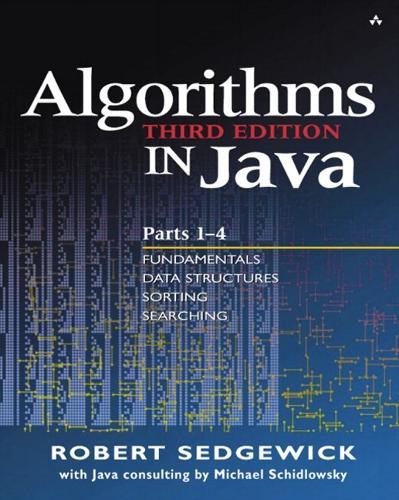Overview
Sedgewick has a real gift for explaining concepts in a way that makes them easy to understand. The use of real programs in page-size (or less) chunks that can be easily understood is a real plus. The figures, programs, and tables are a significant contribution to the learning experience of the reader; they make this book distinctive. --William A. Ward, University of South AlabamaThis edition of Robert Sedgewick's popular work provides current and comprehensive coverage of important algorithms for Java programmers. Michael Schidlowsky and Sedgewick have developed new Java implementations that both express the methods in a concise and direct manner and provide programmers with the practical means to test them on real applications.Many new algorithms are presented, and the explanations of each algorithm are much more detailed than in previous editions. A new text design and detailed, innovative figures, with accompanying commentary, greatly enhance the presentation. The third edition retains the successful blend of theory and practice that has made Sedgewick's work an invaluable resource for more than 400, 000 programmers!This particular book, Parts 1-4, represents the essential first half of Sedgewick's complete work. It provides extensive coverage of fundamental data structures and algorithms for sorting, searching, and related applications. Although the substance of the book applies to programming in any language, the implementations by Schidlowsky and Sedgewick also exploit the natural match between Java classes and abstract data type (ADT) implementations.HighlightsJava class implementations of more than 100 important practical algorithmsEmphasis on ADTs, modular programming, and object-oriented programmingExtensive coverage of arrays, linked lists, trees, and other fundamental data structuresThorough treatment of algorithms for sorting, selection, priority queue ADT implementations, and symbol table ADT implementations (search algorithms)Complete implementations for binomial queues, multiway radix sorting, randomized BSTs, splay trees, skip lists, multiway tries, B trees, extendible hashing, and many other advanced methodsQuantitative information about the algorithms that gives you a basis for comparing themMore than 1, 000 exercises and more than 250 detailed figures to help you learn properties of the algorithmsWhether you are learning the algorithms for the first time or wish to have up-to-date reference material that incorporates new programming styles with classic and new algorithms, you will find a wealth of useful information in this book. 0201361205B08282002
Full Product Details
Author: John Fuller ,
Robert Sedgewick
Publisher: Pearson Education Limited
Imprint: Addison Wesley
Edition: 3rd edition
Dimensions:
Width: 19.80cm
, Height: 3.00cm
, Length: 23.20cm
Weight: 1.200kg
ISBN: 9780201361209
ISBN 10: 0201361205
Pages: 768
Publication Date: 05 August 2002
Audience:
College/higher education
,
Tertiary & Higher Education
Format: Paperback
Publisher's Status: Active
Availability: Awaiting stock

The supplier is currently out of stock of this item. It will be ordered for you and placed on backorder. Once it does come back in stock, we will ship it out for you.
Author Information
Robert Sedgewick is the William O. Baker Professor of Computer Science at Princeton University. He is a Director of Adobe Systems and has served on the research staffs at Xerox PARC, IDA, and INRIA. He earned his Ph.D from Stanford University under Donald E. Knuth. 0201361205AB06262002




